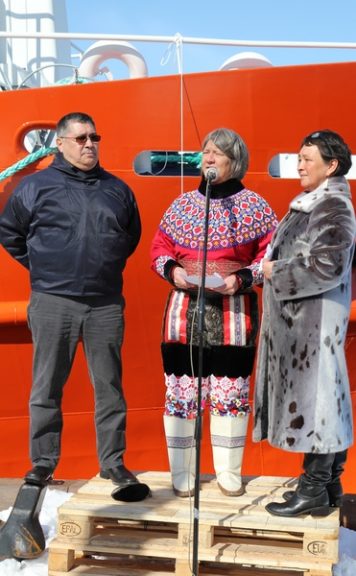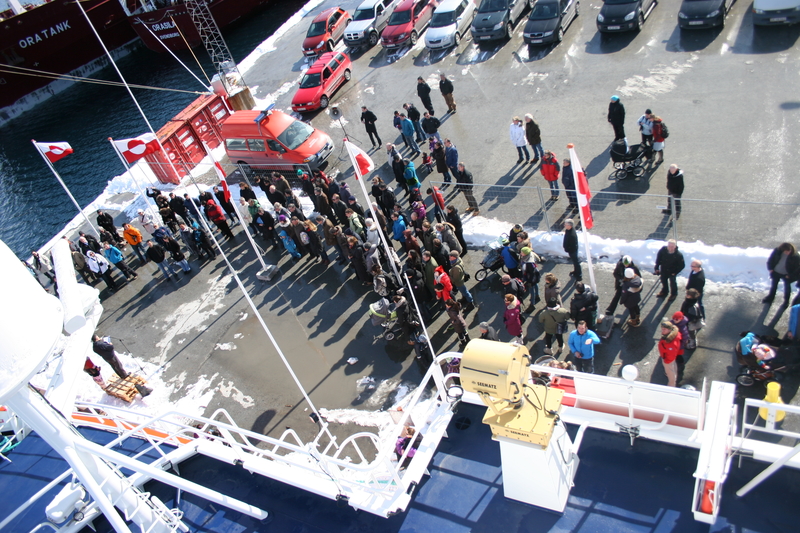R/V Sanna

The official naming took place on April 14th at 14.00 at Skonnertkajen in Nuuk, Greenland. In the photo: Minister of Domestic affairs, Nature and Environment Anhton Frederiksen, Helle Siegstad and Lene Kielsen Holm. Photo: Aviaja Lyberth

Many came to take part in the celebration of Greenland’s new research vessel Photo: F. Ugarte
Sanna – the name
The name Sanna is a strong symbol of the work we carry out at the Institute of Natural Resources, as Sanna refers to Sassuma Arnaa (also known as Zedna, Mother of the Ocean) from the Inuit mythology. Sanna is the root word of Sassuma and shows GINRs commitment and obligation to advise the Government of Greenland and other authorities on sustainable exploitation of living resources and safeguarding the environment and biodiversity.
The official naming of R/V Sanna took place on April 14th at Skonnertkajen in Nuuk, Greenland.
The 32 metre long ship is designed by OSK-Shiptech in close collaboration with the scientists from GINR and Greenland Climate Research Centre (GCRC) and was built at Karstensen’s shipyard in Skagen. The ship will be used primarily for the GINR´s monitoring programmes of the life stock of fish and shellfish in Greenlandic waters and for a broad spectrum of scientific research in the marine environment. The ship will also be a part of research and monitoring activities in connection with exploration for oil and gas and for mining activities close to the coast. The ship costs approximately DKK 50 M and is fitted and equipped for many different tasks within fishery- environmental- and marine research.
Description:
The quarterdeck is large and spacious and equipped with winches and a capstan to handle various tools, such as long lines, nets and traps. The different fishery tools can easily be detached for other use of the deck e.g. dredges and special nets designed to collect small animals and plankton, tools for sample collection from the seabed and much more. There is also possibility for measuring ocean temperature, salinity, oxygen, irradiance (PAR), fluorescence, turbidity and collect water samples from different depths using the CTD-Rosette system.
From the quarterdeck there is access to a wet laboratory, where fish can be measured and weighed and research experiments can be set up. Further ahead there are more laboratories, where it is possible to do various measurements and chemical analysis, and feed data into the ships computer system.
The marine resources (living and non-living) is of vital importance for the Greenlandic society today and in the future, and the new ship will play an important part in providing Greenland with the possibility to obtain sufficient knowledge of how to manage the resources and secure the marine environment. Growing exploration for oil and gas at sea, effects close to the coast from mining activities, expanding cruise tourism with increased shipping and the changing ice conditions have all resulted in increased stress on the marine environment. The amount of marine environmental tasks and the need for preparedness is expected to increase in years to come and the new research ship is therefore not only a long-term investment for the society but also sends out a powerful environment political signal.
For further information contact Helle Siegstad, Head of Department, hesi@natur.gl phone +299 325003

